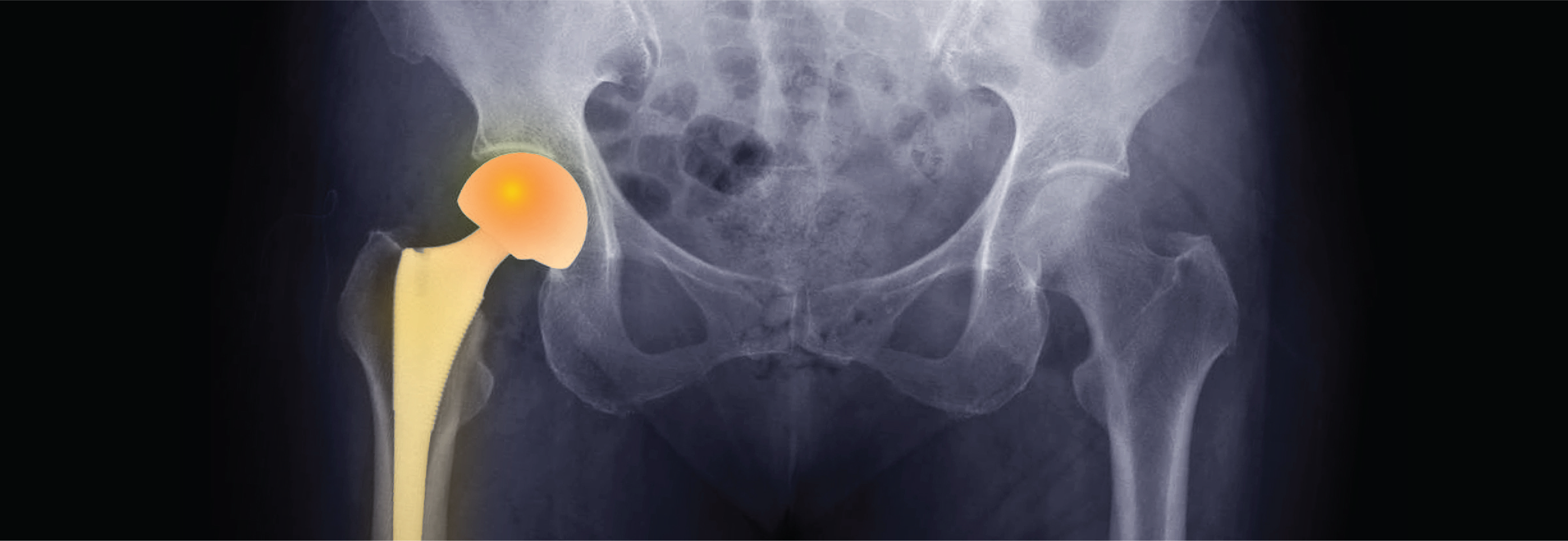Duke orthopaedic surgeons continue to advance the still-novel use of augmented reality (AR) to assist in hip replacement during complex procedures to improve accuracy and outcomes. Sean P. Ryan, MD, an orthopaedic surgeon in the Duke Division of Adult Reconstruction, works with Samuel S. Wellman, MD, in one of the nation’s first AR-assisted hip replacement programs.
“Because of our commitment to minimize complications, we are always looking for ways to deliver better patient outcomes,” Ryan says. “This is the most effective innovation we’ve worked with and it’s showing tremendous promise.”
The AR-guided platform has the potential to increase surgical efficiency and accuracy in total hip arthroplasty (THA). The technology allows surgeons to view 3D models of the patient’s anatomy, implants, and instruments inside the body in real time intraoperatively.
“Our primary focus is securing an accurate placement, which minimizes the risk of a dislocation,” Ryan says. “Unfortunately, as all surgeons know, dislocation remains a significant problem.” The technology is particularly valuable for patients with complex presentations who are at risk of dislocation, Ryan adds.
Patients with arthritis or complex pathologies who need a hip replacement receive a CT scan before surgery. When perioperative preparations are completed, surgeons attach an overlay to the pelvis before donning goggles that provide an AR-enhanced view. An illuminated arrow appears in the goggle screen to guide the procedure.
“Using the technology that overlays the pelvis, we can see in real time the surgical fit of the device,” Ryan says. “Based on our preoperative plan, this system offers a significant advantage over traditional, non-enhanced procedures.”

Gathering data to illustrate outcomes
More than 450,000 total hip replacements are performed annually in the United States, according to the Agency for Healthcare Research and Quality. THA is acknowledged as an effective procedure to reduce the effects of severe arthritis. A study published in 2018 projects that THA will increase by 71%, to 635,000 procedures, by 2030.
Ryan and Wellman are gathering data that helps highlight improved outcomes using the AR-augmented surgical system. “In the next year we will be able to show that this technology improves hip device placement based on outcomes and post-operative images,” Ryan says. “But it will take several years before we know, based on data, that it will reduce dislocation.”
The innovation offers a clear benefit for complex pathologies, Ryan adds, but also but also offers benefits for patients with straightforward arthritis.
“Whatever innovations we can incorporate to move that needle is the priority,” he says. “Based on our research at this point in the program, it appears that AR will help us increase our success rates. We are always looking to minimize complications.”

